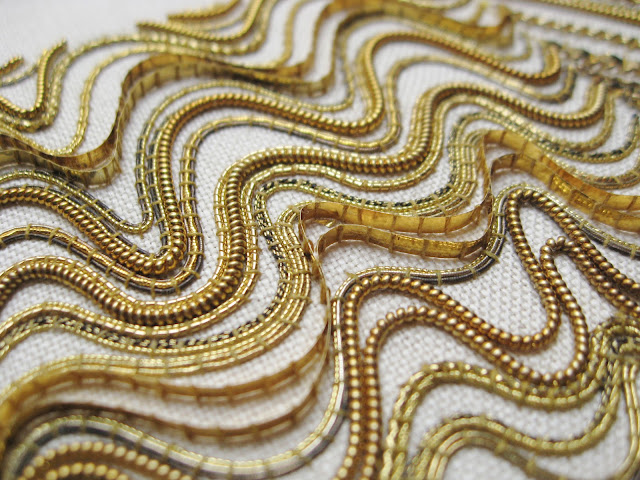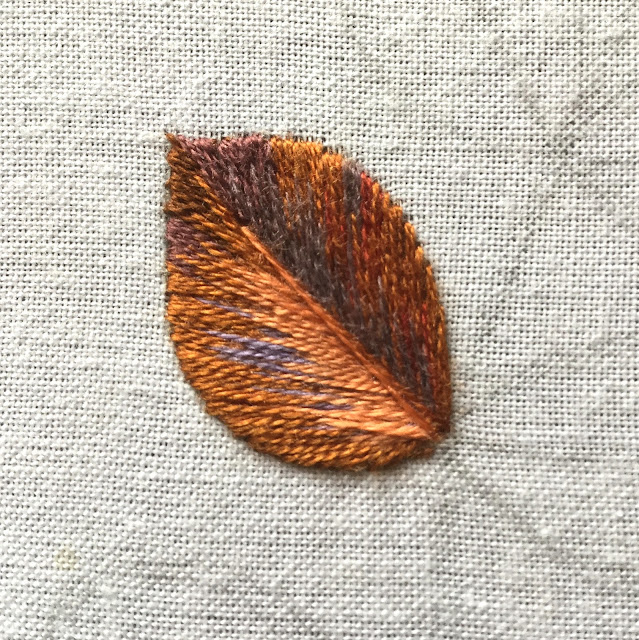This is my gauntlet. I worked it as part of my apprenticeship at the Royal School of Needlework back in 1993, or thereabouts, sometime in my second year. It was one of the last pieces I worked where we could pretty much work whatever we wanted, so I decided on this. I wanted to work something royal, regal, opulent, theatrical, and in red and gold.
I made the glove, but not the pattern as it is a specialist craft in itself, I found a pattern I could use, hand stitched it together by hand, and added the decoration. It fits my hand.
The glove part is soft red leather which I purchased from a leather merchant somewhere in London in the 90's. I light washed it in black ink to take away the glare of the bright red, and to make it look aged. It worked really well, and of course I tested my process first.
I did intend on working a pair, but ran out of time for assessment, therefore I concentrated on completing one, but I have the workings of the other.
It is worked on silk, mainly using metallic threads couched over padding. The padding was a lot of work before the decoration. It has metallic kid red leather, beads, bullion knots, metallic braid, and some free-motion machine embroidery within the diamond squares. It has a little bullion, bright check purl, but mainly it is metallic thread, all hand stitched apart from the free-motion machine embroidery.
It looks as though I have used bullion throughout which are traditional metal threads, but in fact it is mainly metallic threads and braids which I could manipulate more for the design I chose. The design itself is purely decorative and drawn on a curve so that it is wider at the top and fits the glove at the bottom.
#goldwork
#goldworkembroidery
#embroidery
#handembroidery
#handembroidrred
#glove
#gauntlet
#embroiderdgauntlets
#tracyafranklin
#apprenticeship
#royalschoolofneedlework




























